A business-to-business (B2B) and a business-to-consumer (B2C) marketing strategy is critical for success in the ever-develop marketing world.
Business-to-business (B2B) refers to business transactions, such as manufacturers selling products to retailers. Business-to-consumer (B2C) relates to transactions between businesses and consumers, such as retail stores selling directly to customers. Marketing and sales strategies for each are different because they cater to different audiences.
This post will examine the core differences, from audience targeting and sales cycles to customer relationships and service approaches.
B2B vs. B2C: 7 Key Differences
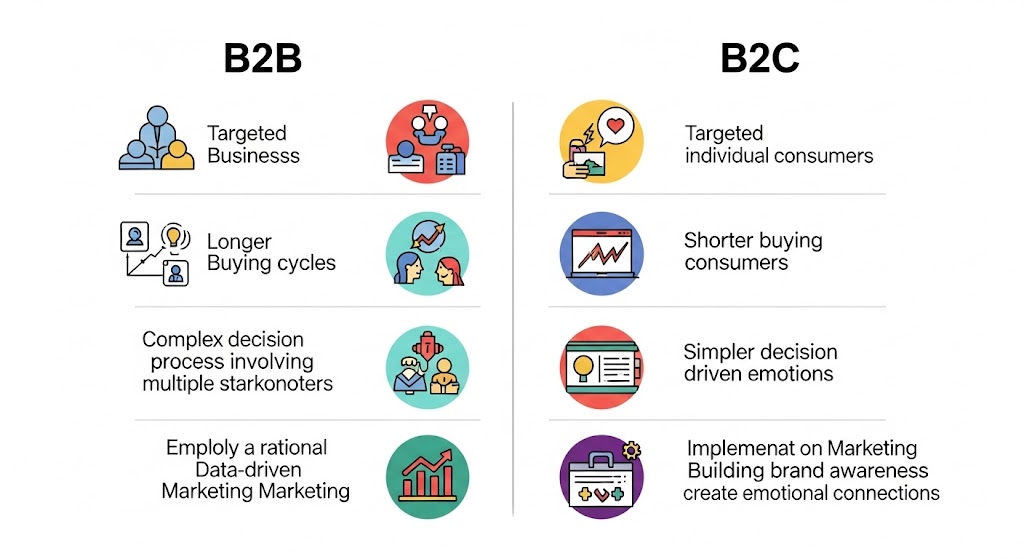
B2B and B2C marketing strategies and tactics differ significantly, but they share some features. If you understand these differences, you can target your marketing efforts effectively.
Audience Targeting
It is different for a B2B company to identify and reach its audience than it is for a B2C company.
B2B: Niche Markets and Industries
Niche markets and specific industries are usually targeted by B2B marketing. Marketers focus on addressing a select group of businesses' unique needs, making the messaging highly specialized.
B2C: Demographic and Psychographic Targeting
A big group of consumers is targeted with B2C marketing using demographics (age, gender, location) and psychographics (interests, values).
Sales Cycle Lengths
B2B and B2C sales cycles can differ greatly based on the market. The buying process and the people involved contribute to these variations. Let's examine some of these differences.
B2B Sales Cycle: A Longer Journey
B2B sales generally take longer and are more complex. This is because:
- Multiple Stakeholders: B2B purchases usually involve several decision-makers.
- Complex Processes: Businesses have formal procedures and policies to follow.
- Building Trust: Establishing trust and rapport with business clients takes time.
Because of these factors, B2B sales can take over two months on average.
B2C Sales Cycle: Quick and Simple
The sales process for B2C is simpler and shorter than for B2B. I will explain why below:
- Consumer Decisions: Consumers makes the purchase decision.
- Lower Price Points: The cost is typically lower, requiring less deliberation.
- Minimal Interaction: Consumers often complete their purchases online with little need for salesperson interaction.
The B2C sales process can sometimes be completed in just minutes, making it much faster than B2B.
Decision-Making Process
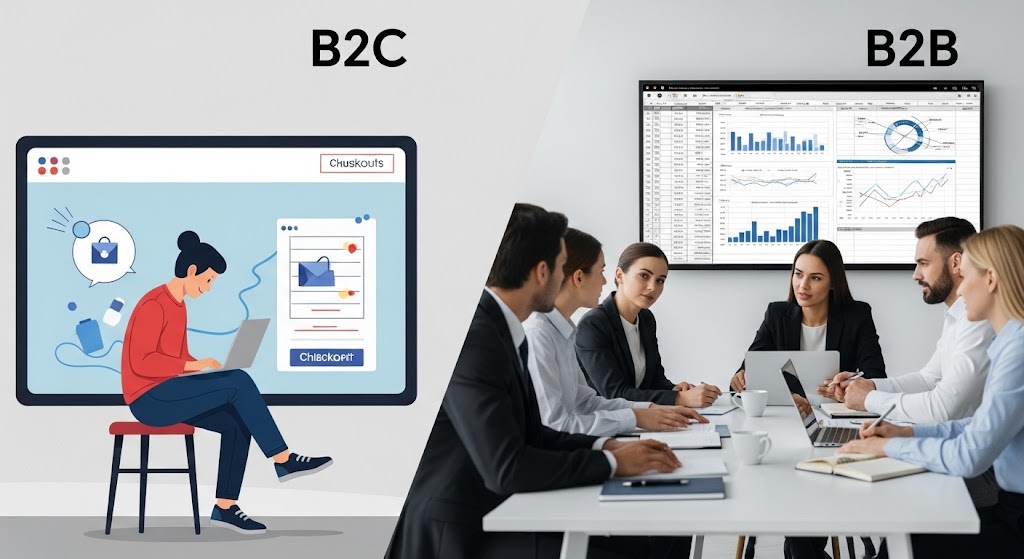
It is important to know how decisions are made in B2C and B2B environments if you want to develop effective marketing strategies. Buyers and sellers take part in both processes, but they are quite different. We will discuss how each market operates.
B2B Decision-Making
B2B decision-making is often detailed and analytical, involving several steps to ensure you make the right choice.
- Rational Considerations: Using data and logic helps in making decisions.
- User Needs: It's important to know who will use it.
- Cost Analysis: Assessing costs and potential return on investment (ROI) is critical.
- Organizational Impact: Evaluating how the purchase will affect the entire company.
- Multiple Decision-Makers: The process usually includes input from legal, management, and executive teams.
Decision-Making in B2C
It is more personal and quick within the B2C decision-making process. This focuses on the experience and satisfaction of the consumer.
- Emotional Influence: Often, personal feelings and emotions influence the decisions to buy.
- Visual Appeal: The choices could be influenced through beautiful packaging and design.
- Price and Value: Consumers are attracted by affordability and go for products or services that show value for money.
- Convenience: Ease with which the product or service is accessed and its usability hold great appeal.
- Brand Loyalty: Familiarity and confidence are attached to a brand.
- Single Decision-Maker: Consumers typically make a decision on their own, though they may consult family and friends.
Customer Relationships

The development of good customer relationships is the first key to marketing. The mode of interaction between businesses and customers may vary between B2B and B2C. Let's look at these differences.
B2B: Building Strong, Long-Term Bonds
B2B companies work at creating personal and durable ties with their clients. Such relationships are more important because:
- Sales are mostly complex in nature and take time.
- Continuous communication keeps the sales process moving.
- Sales teams or managers help build these relationships.
B2C: Quick Interactions and Customer Satisfaction
In B2C interactions, the focus is on customer satisfaction with the purchase they made. B2C brands build relationships by:
- High-quality products are offered.
- Creating engaging content online, like on social media.
- Collaborating with trusted influencers.
A positive brand image and strong brand recognition can help B2C companies attract more customers.
Customer Service
Customer service is crucial, whether B2B or B2C. Service delivery can differ significantly between these two models. Here are some differences between the approaches.
B2B: Personalized and Expert Support
Business-to-business companies usually have to handle more complicated products and services that require special support. Some of the key characteristics of B2B customer service include:
- Account Managers: Develop close working relationships with them for personal attention.
- Person-centered support plans: Contracts or service agreements may differ in respect of services.
- Expertise Level: A support team must have deep product knowledge to deliver practical assistance to customers.
B2C: Fast and Scalable Solutions
Business-to-consumer companies have their focus on the line of efficiently addressing many inquiries. Here is how they handle customer service:
- Quick Responses: Address common issues like returns or refunds promptly.
- Self-Service Options: Use chatbots and FAQs to help customers solve problems independently.
- Streamlined Processes: Simplified systems for returns and tracking orders enhance user experience.
Detailed Marketing Tactics
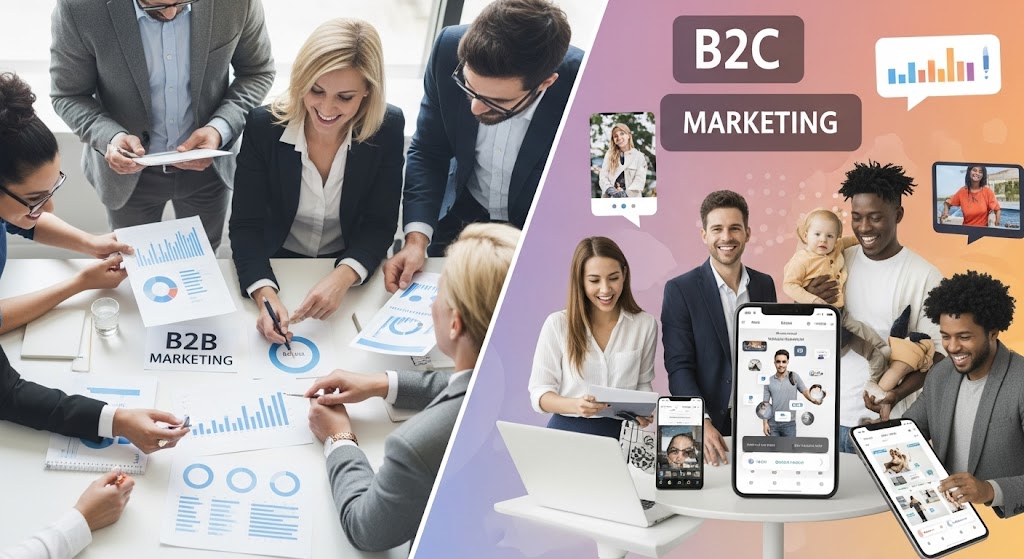
B2B and B2C marketing require different strategies. It's important to be effective in both.
B2B Marketing Tactics
Marketing to businesses is about building long-term relationships and demonstrating long-term value.
- Account-Based Marketing (ABM):
- Targets high-value accounts with personalized outreach.
- A company like Engagio secured meetings by sending custom bobbleheads to decision-makers.
- Events and Networking:
- Presentation of products at trade shows and conferences.
- These events are great for networking and enhancing your industry presence.
- Example: Potential clients can be met at the National Restaurant Association's annual trade show in Chicago.
- Content Marketing:
- Involves creating informative content to build brand authority.
- Formats include blogs, webinars, and case studies.
- Example: Xero, a company that provides accounting software, builds trust and demonstrates expertise by providing how-to guides for small businesses.
B2C Marketing Tactics
B2C marketing focuses on individual emotions and creating a direct connection with consumers.
- Emotional Engagement:
- Creates strong connections by matching customer values.
- Examples: Allbirds connects with eco-conscious consumers.
- Content and Social Media Marketing:
- Engaging consumers with relatable content and interactive social media.
- Create engaging campaigns and influencer marketing.
- Example: Wilson educates consumers on choosing the right tennis racket and linking it to their products.
- Mass Media Marketing:
- Reaches large audiences through TV, radio, and billboards.
- Effective for broad brand awareness but may cause lower conversion rates.
Ecommerce Strategies
Ecommerce strategies differ a lot between B2B and B2C, each meeting unique needs and preferences. Let's look at the main strategies used in these areas.
B2B Ecommerce
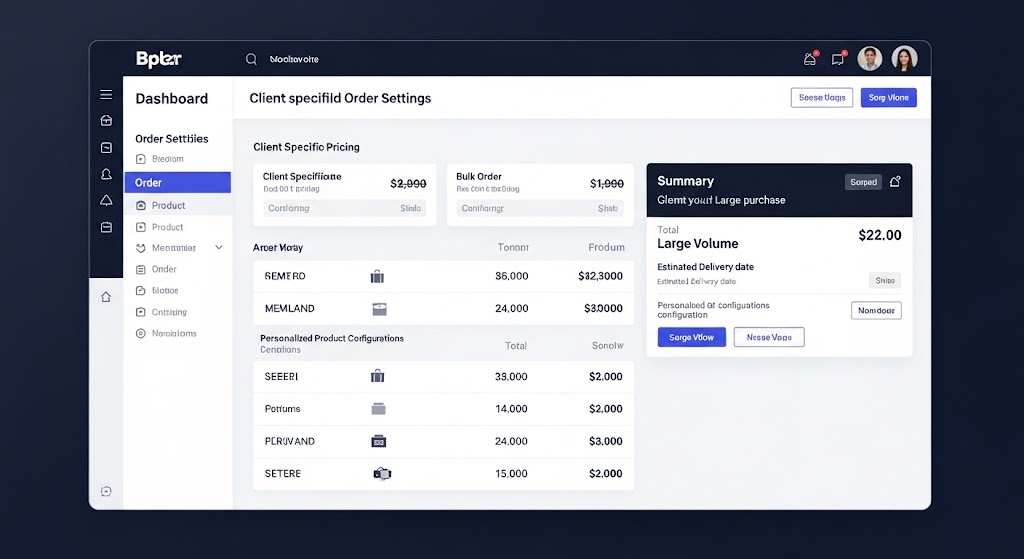
Customization and Bulk Order Capabilities
A B2B ecommerce site must be able to customize and accept bulk orders. Businesses can offer tailored solutions to their clients based on their preferences and needs. A company's capability to handle volumes of material, along with customized specifications, can very well seal the success of a transaction.
- Customized Solution: A business can order tailored items in order to meet their requirements. This will surely satisfy them.
- Bulk Ordering: There is an opportunity for clients to place orders in bulk. Most of the time, this reduces costs.
- Efficiency: This can streamline placing an order for any given business that operates on the basis of tight schedules.
Enterprise Integration
Another very important part of B2B e-commerce integration is enterprise systems. A type of integration in which the different business operations coordinate with one another, such as inventory and management of customer relationships.
- Smooth Operation: Helps in managing inventory and orders.
- Enhanced Communication:It improves the communication between different departments of the business.
- Real-Life Example: "A supplier whose e-commerce platform is integrated to a client's procurement system, which will enable the automatic processing of orders.
B2C Ecommerce
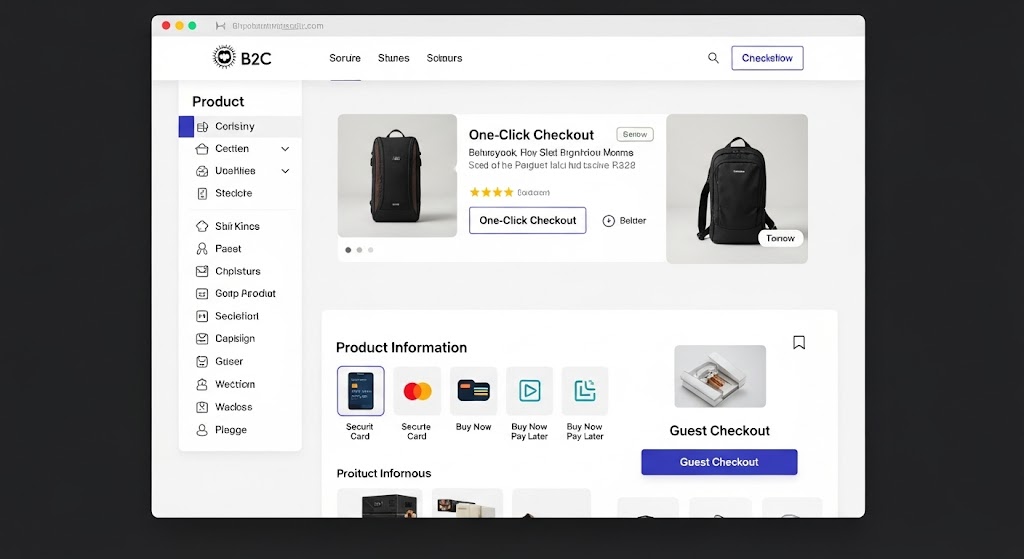
Seamless checkout and user-friendly interfaces
User-friendly interfaces and seamless checkout experiences are vital in B2C ecommerce. These elements make shopping enjoyable and hassle-free for consumers, encouraging repeat purchases.
- Intuitive Design: Easy navigation ensures that customers find what they need quickly.
- Quick Checkout: Multiple payment options and fast processing improve user satisfaction.
- Example Features: One-click purchasing and guest checkout options are popular features.
Promotions and Personalized Recommendations
Promotions and personalized recommendations play a significant role in retaining B2C customers. These strategies make shopping more engaging and tailored to individual preferences.
- Attractive Offers: Discounts and special deals entice customers to make purchases.
- Personalized Experience: Recommendations based on past purchases enhance customer loyalty.
- Effective Examples: Email campaigns and on-site suggestions often drive higher sales.
Branding
Branding plays a crucial role in both types of marketing, but the approach varies.
- B2B: Strategic Positioning and Industry ReputationB2B companies prioritize their positioning within the industry. Branding focuses on building a strong reputation, highlighting expertise, reliability, and industry leadership.
- B2C: Prioritizing Message Clarity and Emotional AppealB2C branding focuses more on emotional connection. It emphasizes simple, clear messages that resonate with consumer desires, often aiming to evoke happiness, excitement, or trust.
Ad Copy
The tone and language used in ad copy are tailored to the audience's needs.
- B2B: Technical Language and Industry JargonB2B ad copy is more technical, using industry-specific terms that resonate with professional audiences. This type of copy focuses on the product or service's practical benefits.
- B2C: Emotional and Persuasive LanguageAd copy in B2C is more emotional and persuasive. It seeks to tap into consumer emotions, encouraging them to take action based on feelings, desires, or immediate needs.
What's Common Between B2B and B2C
B2B and B2C models target customers differently, but both focus on making sales, building customer relationships, and fostering brand loyalty.Here are a few areas where B2B and B2C businesses overlap:
Customer Insights From Data Analysis
Businesses, whether B2B or B2C, depend on their brand's reputation to draw and keep customers. People want brands they can trust.
- Credibility Builds Trust: A strong reputation helps establish credibility, which is key for making sales.
- Loyalty Leads to Repeat Business: Loyal customers are more likely to make repeat purchases, whether it’s a company restocking supplies or a consumer buying the latest product.
- Word of Mouth Matters: Happy customers are likely to spread the word, bringing in new business.
Analyzing Data For Customer Insights
B2B and B2C businesses use data analytics to better understand their customers' needs and behaviors. They can then customize marketing strategies and improve customer experiences.
Targeted Marketing: Businesses can segment their audience and deliver more personalized messages by analyzing data.
Improved Customer Experience: Data helps identify customer problems, address issues and improve satisfaction.
Informed Decision-Making: Data insights help companies make more intelligent decisions about products, services, and customer interactions.
Conclusion
B2B and B2C marketing both involve brand loyalty and customer insight. However, B2B focuses on building long-term trust and providing detailed information, while B2C targets emotional engagement and quick decisions.
You must understand the needs of your business and the expectations of your audience to craft the right strategy. Whether targeting businesses or consumers, aligning your marketing approach with these distinct differences will foster stronger connections and help achieve your objectives.

